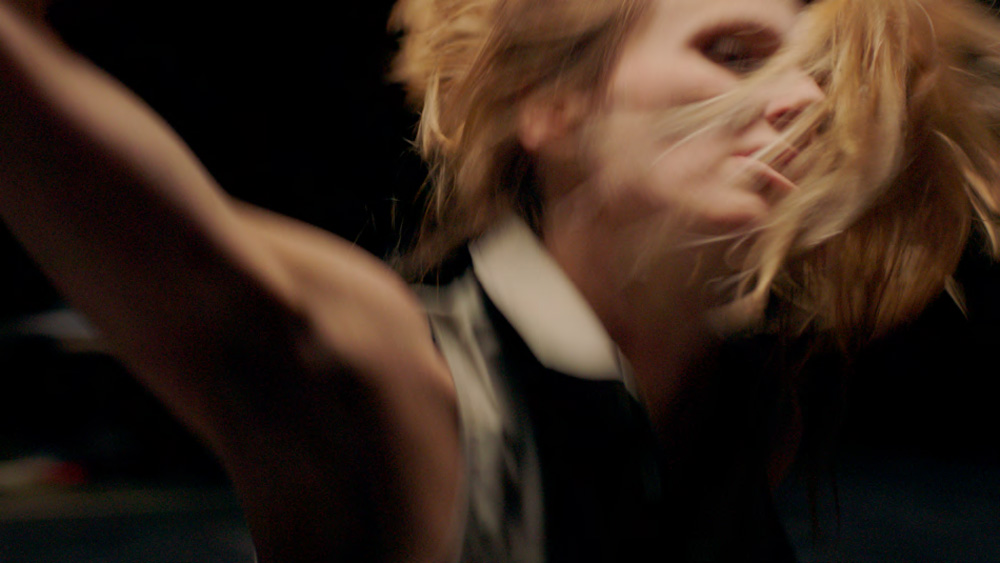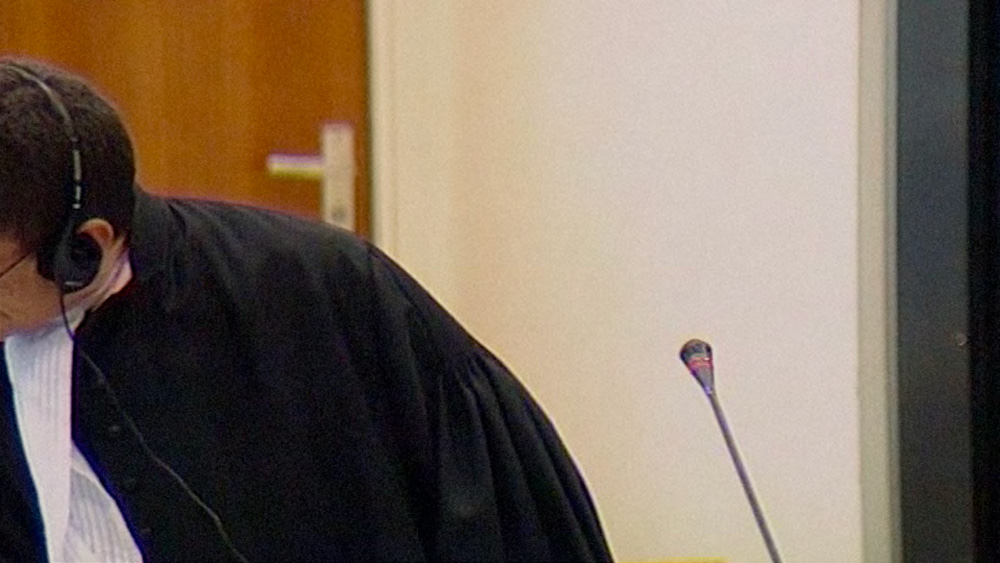Film installation, 47′
English, Croatian spoken
2019
Aphasia (Act 3) brings to life a well-known photograph. Although it is never unveiled in the film, we recognize it described and interpreted in two mirroring doppelgangers, a monologue by journalist Barbara Matejčić and choreography of violence performed by Ivana Jozić.


The point of departure in the final act in Aphasia is an “anecdote” about DJ Max; a pioneer of electronic music in Belgrade, and protagonist in one of the most infamous photos of the war in Bosnia – where he is seen kicking in the head a dead Muslim woman previously killed by Serbian paramilitary forces. Millions of people have seen it. It was taken by the American photographer Ron Haviv and published worldwide. Sontag wrote about it, Godard made a short film about it and journalists have cited it as a photo that shows everything you need to know about the war.
After the war, Haviv’s photographs became part of a large collection of photographic and video material consulted as evidence—frequently of critical importance—in criminal prosecutions at the International Criminal Tribunal for the former Yugoslavia in The Hague. Several court proceedings, starting with the trial against Slobodan Milošević, called on the photo as evidence to establish the command responsibility of the Serbian authorities for the crimes committed in the former Yugoslavia. Several witnesses would identify the soldier as Srđan Golubović, a former member of the Serbian Volunteer Guard, known as Max on the battlefield and DJ Max in Belgrade.
As curator Branka Benčić explains, “The starting point of Jelena Jureša’s interest in the evolution of a narrative constituting the final episode of Aphasia is a single photograph, which is never shown in the work, but its presence is almost tangible, heavy, almost to the point of materialising before our eyes. We identify it in speech, we identify it in motion. It is heard, but not directly seen. Present in the spoken word, in the tension of the performer’s kicking foot, body torsion, and posture. In Aphasia the photograph is described through the words of Barbara Matejčić, a research journalist and protagonist of this work. Barbara’s presence marks a return to the present, a transition from the historical events represented by the found footage score, into the real, a passage into ‘our’ actual reality. Her spoken words connect the past and the present, face us with the scene from Bijeljina and its consequences, the question ‘I wonder how much they know’ untangles an entire web of relations and responsibilities.”
